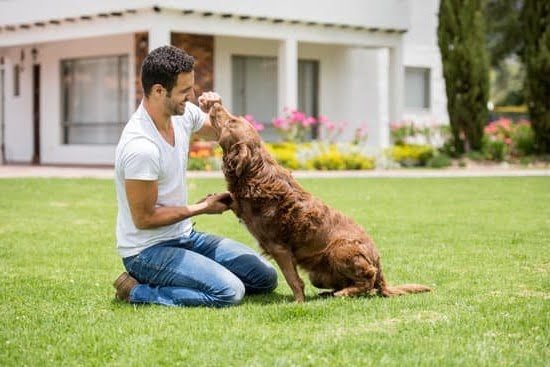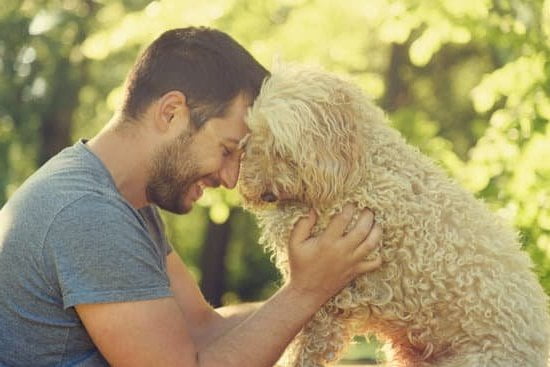Are staffy dogs easy to train? The intelligence and temperament of Staffy dogs play a significant role in their trainability, making them an intriguing breed to explore.
This article aims to provide insight into the training of Staffy dogs, addressing the importance of early socialization, effective training methods, common misconceptions, and the role of consistency and patience. By understanding these factors, prospective and current owners can develop a comprehensive approach to training their Staffy dogs for a harmonious and fulfilling relationship.
Staffordshire Bull Terriers, affectionately known as Staffies, are renowned for their loyalty, affectionate nature, and strong-willed personality. Their intelligence and eagerness to please make them a popular choice for many dog owners. However, training these dogs requires careful consideration of their unique characteristics and behavioral tendencies. With the right approach and understanding of the breed, owners can effectively harness the potential of Staffy dogs through positive reinforcement and consistent training techniques.
Early socialization is paramount in shaping the behavior and temperament of Staffy dogs. Exposing them to various environments, people, and animals from a young age lays the foundation for well-rounded social skills and adaptability. Additionally, implementing consistent training methods from puppyhood sets the stage for a lifelong journey of learning and development. By delving into the intricacies of training Staffy dogs, individuals can discover the joy of cultivating a strong bond based on mutual respect and understanding.
The Intelligence and Temperament of Staffy Dogs
Staffordshire Bull Terriers, commonly known as Staffy dogs, are a beloved breed known for their intelligence and loyal temperament. Understanding the characteristics of this breed is crucial when considering training methods and techniques. The Staffy dog’s intelligence and temperament play a significant role in their trainability.
The intelligence of Staffy dogs makes them quick learners, which can be beneficial in training. They are known for being responsive to training when it is done with consistency and positive reinforcement. Additionally, their loyal and affectionate nature makes them eager to please their owners, which can make the training process more enjoyable and successful.
Early socialization and training are vital for Staffy dogs to ensure they develop into well-behaved and obedient companions. Exposing them to different people, animals, environments, and experiences from a young age helps them become more well-rounded and adaptable pets. It also helps prevent any potential behavioral issues that may arise if they are not properly socialized during their formative months.
When considering whether or not Staffy dogs are easy to train, it is important to recognize that every dog is an individual with its own unique personality and characteristics. While some Staffy dogs may take quickly to training, others may require more patience and consistent reinforcement. It is essential for owners to understand the specific needs of their Staffy dog and tailor the training approach accordingly to achieve the best results.
- Intelligence plays a significant role in the trainability of Staffy dogs
- Early socialization is important for their overall behavior
- Every dog is unique; some may be easier to train than others
The Importance of Early Socialization and Training
Early socialization and training are crucial for any dog breed, including Staffy dogs. When it comes to Staffies, starting their socialization and training at a young age is especially important due to their strong and determined nature. This early exposure helps them develop into well-rounded and well-behaved companions. Here are some key reasons why early socialization and training are essential for Staffy dogs:
1. Preventing Behavioral Issues: Early socialization introduces Staffy puppies to various people, animals, environments, and experiences. This exposure reduces the likelihood of fearfulness, aggression, or anxiety towards unfamiliar situations later in life.
2. Building Confidence: Positive interactions with other dogs and humans during the critical developmental period helps build confidence in Staffy dogs. With proper socialization, they can grow up to be friendly and outgoing rather than timid or reactive.
3. Establishing Good Behavior Patterns: Training at a young age allows Staffies to learn basic commands, leash manners, and proper behavior within the household. Consistent training sets the foundation for desirable behaviors as they mature.
Training Methods and Techniques for Staffy Dogs
Staffy dogs, also known as Staffordshire Bull Terriers, are known for their intelligence and strong-willed nature. When it comes to training them, it is important to understand the best methods and techniques that work well with this breed. Patience, consistency, and positive reinforcement are key elements in effectively training a Staffy dog.
One of the most effective training methods for Staffy dogs is positive reinforcement. This involves rewarding good behavior with treats, praise, or toys. Staffies respond well to rewards and are motivated by positive reinforcement. This method helps build a strong bond between the dog and its owner while encouraging desired behaviors.
Another important technique for training Staffy dogs is using consistent commands and cues. These dogs are intelligent and can quickly pick up on new commands, but they also have a tendency to test boundaries. Using consistent cues for specific behaviors will help them understand what is expected of them.
It is also important to remember that early socialization plays a crucial role in the training of Staffy dogs. Exposing them to various people, animals, and environments from an early age can help prevent behavioral issues later on. Training should start as soon as possible to establish good habits and prevent any potential challenges down the road. Overall, while Staffy dogs may have a stubborn streak, with the right training methods and techniques, they can be successfully trained.
Common Misconceptions About Training Staffy Dogs
Myths and Misconceptions
There are several common misconceptions about training Staffy dogs that can lead to misunderstandings about the breed. One of the most prevalent myths is that Staffies are inherently aggressive and difficult to train. This misconception often stems from negative portrayals of the breed in popular media, but it is important to recognize that individual temperament and behavior can vary widely among dogs, regardless of their breed.
Personality Versus Training
Another misconception is that training a Staffy dog requires harsh or forceful methods due to their strong, muscular build. In reality, like all dogs, Staffies respond best to positive reinforcement techniques and consistent, gentle guidance. While they may have a more energetic and exuberant nature compared to some other breeds, this does not make them inherently untrainable.
Understanding the Breed
It is crucial for prospective owners and trainers to understand the specific characteristics of the Staffy breed in order to effectively train them. By acknowledging the stereotypes and misconceptions surrounding these dogs, individuals can work towards providing appropriate training and socialization experiences for their Staffies based on their unique personalities and needs.
It is important to approach training with an open mind and a willingness to dispel myths in favor of understanding the true nature of these loyal and affectionate dogs.
The Role of Consistency and Patience in Training Staffy Dogs
Staffy dogs, also known as Staffordshire Bull Terriers, are a strong, muscular, and agile breed with a loyal and affectionate nature. They are often described as confident, courageous, and good-natured, making them an excellent choice for families and individuals alike. However, like all breeds, Staffies require consistent training and socialization to ensure they grow up to be well-behaved and obedient companions.
The Importance of Consistency
Consistency is key when it comes to training Staffy dogs. These intelligent animals thrive on routines and clear expectations. It’s essential for owners to establish consistent rules and boundaries from the beginning to prevent any confusion or behavioral issues. From basic commands like sit and stay to leash manners and house-training, practicing consistent techniques will help the Staffy understand what is expected of them.
The Role of Patience
Patience is another crucial factor in training Staffy dogs. They are eager to please their owners but can also be quite stubborn at times. It’s important for trainers to remain patient during the process of teaching new behaviors or correcting unwanted ones. Rushing through training sessions or responding with frustration can hinder the progress and create a negative association with learning for the dog.
Positive Reinforcement
Using positive reinforcement techniques such as treats, praise, and play is highly effective when training Staffy dogs. This breed responds well to rewards for good behavior and will be motivated to continue performing desired actions when they are positively reinforced. Consistently using praise and rewards during training sessions will help strengthen the bond between the owner and their Staffy while promoting a positive learning experience.
Positive Reinforcement and Reward-Based Training for Staffy Dogs
Staffy dogs are known for their intelligence and loyalty, making them great candidates for positive reinforcement and reward-based training methods. Positive reinforcement involves rewarding your dog for exhibiting good behavior, such as sitting when commanded or walking politely on a leash, while ignoring or redirecting unwanted behavior. This method is effective because it encourages the dog to repeat the desired behavior in order to receive a reward.
When training Staffy dogs using positive reinforcement, it is important to find out what motivates them. Whether it’s treats, toys, or verbal praise, understanding what your dog values most will make the training more successful. Additionally, consistency is key when using this method. Rewarding your Staffy for good behavior every time it occurs will reinforce the desired actions and lead to faster learning.
Reward-based training can also include clicker training, where a clicker sound is used to mark the moment the dog does the correct behavior followed by a treat. This method is particularly effective with Staffy dogs because it provides clear communication about what behavior is being rewarded.
One common misconception about positive reinforcement is that it involves only giving treats to your dog. While treats can be an effective tool during training sessions, they should be gradually phased out as the dog learns the desired behaviors.
Verbal praise and affection can also serve as rewards and should be incorporated into the training process. It’s important to remember that for staffy dogs easy to train shows how using positive reinforcement methods can build a strong bond between you and your pet while helping them learn new behaviors in a fun and engaging way.
| Positive Reinforcement Method | Effectiveness |
|---|---|
| Treats/Toys as Rewards | Effective in motivating Staffy dogs during initial stages of training |
| Verbal Praise/Affection | Serves as additional rewards and helps strengthen bond with owner |
| Clicker Training | Useful for providing clear communication about rewarded behaviors |
Overcoming Challenges and Behavioral Issues in Training Staffy Dogs
Staffy dogs have a reputation for being strong-willed and independent, which can sometimes present challenges when it comes to training. However, with the right approach and techniques, these challenges can be overcome. One common behavioral issue that owners may face when training Staffies is their tendency to be quite stubborn. This can make it difficult to get them to follow commands consistently.
One effective way to overcome this challenge is to use positive reinforcement and reward-based training methods. By rewarding good behavior with treats, praise, or playtime, you can motivate your Staffy to listen and obey commands. Another important factor in overcoming behavioral issues in training Staffy dogs is the role of consistency and patience. It’s essential for owners to be consistent in their training approach and patient with their pet as they learn new behaviors.
It’s also important to address any specific behavioral issues that may arise during training, such as excessive barking or jumping up on people. Understanding the root cause of these behaviors and using targeted training techniques can help address these challenges effectively. With the right guidance and commitment from owners, Staffy dogs can indeed be trained successfully, despite any initial behavioral issues they may present.
| Training Challenges | How to Overcome Them |
|---|---|
| Stubbornness | Use positive reinforcement and reward-based training methods |
| Consistency and Patience | Be consistent in training approach and patient with your pet as they learn new behaviors |
| Specific Behavior Issues (excessive barking or jumping) | Identify the root cause of the behavior and use targeted training techniques |
Conclusion
In conclusion, when it comes to the question “Are Staffy Dogs Easy to Train?”, the reality is that Staffy dogs can be trained effectively with the right approach. While they are known for being intelligent and eager to please, it is important to recognize that they also have a strong and independent nature. This means that training them requires patience, consistency, and an understanding of their unique temperament.
Early socialization and training play a crucial role in shaping the behavior of Staffy dogs. By exposing them to different environments, people, and animals from a young age, owners can help prevent potential behavioral issues in the future. Positive reinforcement and reward-based training techniques have been proven to be highly effective with this breed, as they respond well to praise and treats.
It is essential for owners of Staffy dogs to understand that training is an ongoing process that requires dedication and commitment. While there may be challenges and misconceptions about their trainability, with the right resources and techniques, Staffy dogs can become well-behaved companions. Overall, while they may not be the easiest breed to train, with the proper approach and consistent training methods, staffy dogs can indeed be successfully trained.
Frequently Asked Questions
Are Staffies Good for Beginners?
Staffies can be good for beginners as long as they are committed to providing proper training, socialization, and exercise for the dog. These dogs can be loving and loyal companions when given the right care and attention.
Are Staffies High Maintenance?
Staffies are not necessarily high maintenance in terms of grooming, but they do require a lot of physical and mental stimulation. They have high energy levels and need plenty of exercise to keep them happy and healthy. Without enough activity, they can become destructive or develop behavioral issues.
Why Are Staffies Hard to Train?
Staffies can be hard to train because they are intelligent, strong-willed, and sometimes stubborn. They may also have a predisposition for guarding or protective behaviors, so early socialization and consistent positive reinforcement training are key to helping them become well-behaved pets. Patience and understanding are crucial when training a Staffie.

Welcome to the blog! I am a professional dog trainer and have been working with dogs for many years. In this blog, I will be discussing various topics related to dog training, including tips, tricks, and advice. I hope you find this information helpful and informative. Thanks for reading!





